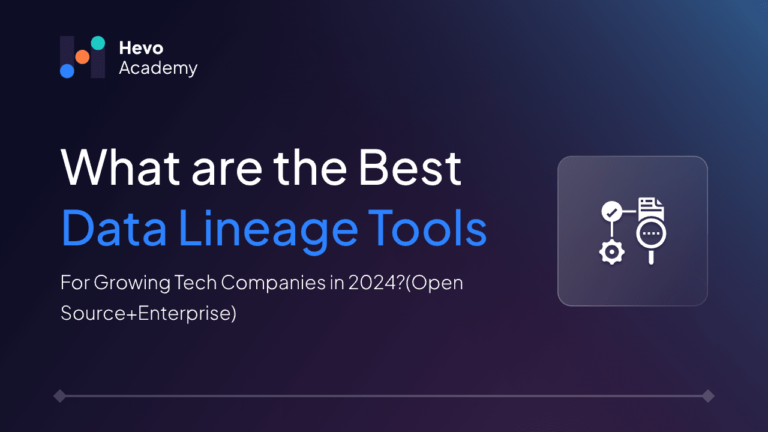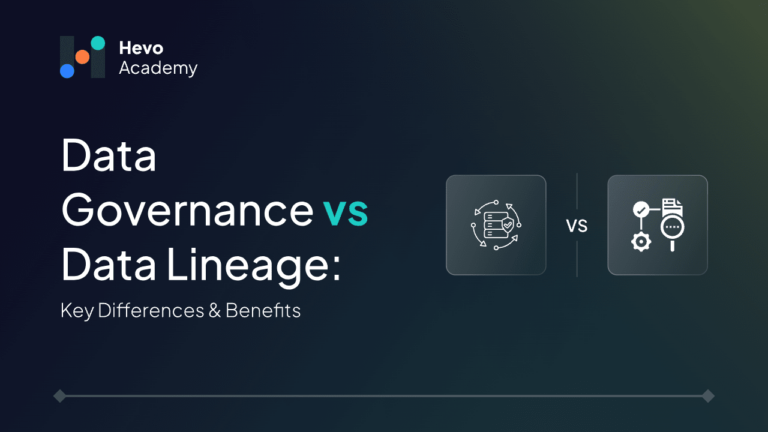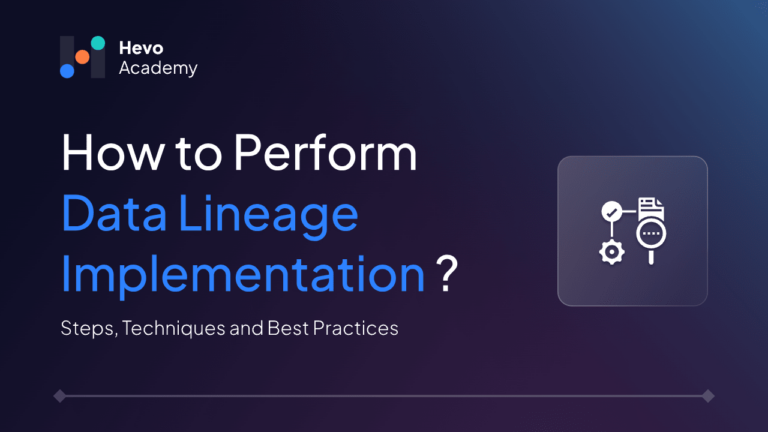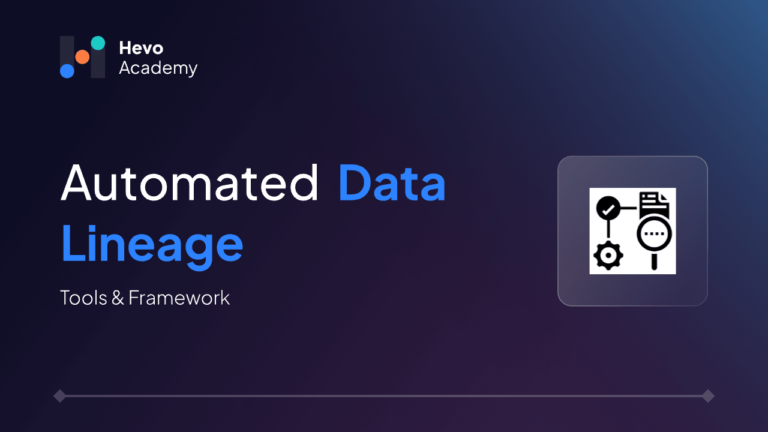You often find yourself questioning:
Table of Contents
- How can I ensure the accuracy and reliability of my data?
- What steps can I take to trace the origin of my data and understand its transformations?
- How do I maintain compliance with regulations while managing complex data flows?
The answer lies in having a robust data lineage tracking system in place.
Data lineage tracking is crucial for understanding and documenting the flow of data through an organization—from its origin to its final destination. It enhances data quality, transparency, and compliance with regulations. But how effectively are you using it?
To truly leverage data lineage, consider these three key approaches: automate your tracking processes to minimize manual errors, maintain detailed documentation of your data journey, and foster collaboration among teams to build trust in your data systems.
This article delves into the importance of data lineage tracking, the challenges in its implementation, top best practices for effective tracking, and emerging trends shaping its future.
Importance of Data Lineage Tracking
To understand data lineage, it’s crucial to know the history of your data, including its origin, transformations, and endpoint. This clarity helps identify discrepancies and inconsistencies, building trust for teams using data to make informed decisions. Additionally, data lineage improves data literacy, allowing you to trace data back to its source for better context and usage.
In terms of critical aspects like compliance, governance, and risk management, data lineage plays a vital role:
- For compliance, data lineage provides the necessary documentation and traceability required by regulations such as GDPR and HIPAA.
- For risk management, it maps data flows and identifies potential risks, like breaches or non-compliance.
- For data governance, it ensures data assets and relationships are well understood, enforcing policies and responsible data use.
By tracking data lineage, organizations can enhance data reliability, improve decision-making, and ensure regulatory compliance.
Challenges in Implementing Data Lineage Tracking
Once we feel confident about implementing data lineage tracking systems, we gather resources, select tools, and begin the setup. But is that enough? Migrating from legacy systems or aligning new repositories with data lineage is challenging, but identifying common obstacles early can greatly enhance our success.
Here are some common obstacles:
- Modern data systems’ complexity makes accurate tracking tough, leading to potential gaps in lineage documentation.
- Inconsistent naming conventions and formats across platforms cause confusion and errors.
- Limited tooling support hampers maintaining precise lineage information.
- Data ownership by multiple business units complicates a comprehensive view of lineage, causing fragmented governance.
- Regulatory compliance demands detailed data tracking, with non-compliance risking significant penalties.
- Resource constraints, like insufficient personnel, tools, and infrastructure, can result in incomplete or inaccurate lineage records.
Explore more common data lineage challenges and tackle them by implementing tools for traceability, compliance, and workflow integration.
Considering the human factor, resistance to change is a common challenge when implementing new systems, often due to unfamiliarity with new processes or tools and a lack of expertise in data lineage practices.
To overcome this, it’s crucial to prepare resources with appropriate knowledge, as understanding the benefits and processes involved can ease concerns and foster acceptance. Providing training sessions and clear documentation on the migration process empowers employees, builds confidence in using new systems, and engaging stakeholders early ensures they understand the value of data lineage, fostering buy-in and collaboration.
Top 7 Best Practices For Data Lineage Tracking
While data lineage helps with understanding your data’s journey, following best practices helps meet regulations, reduces risks, and improves how we manage data.
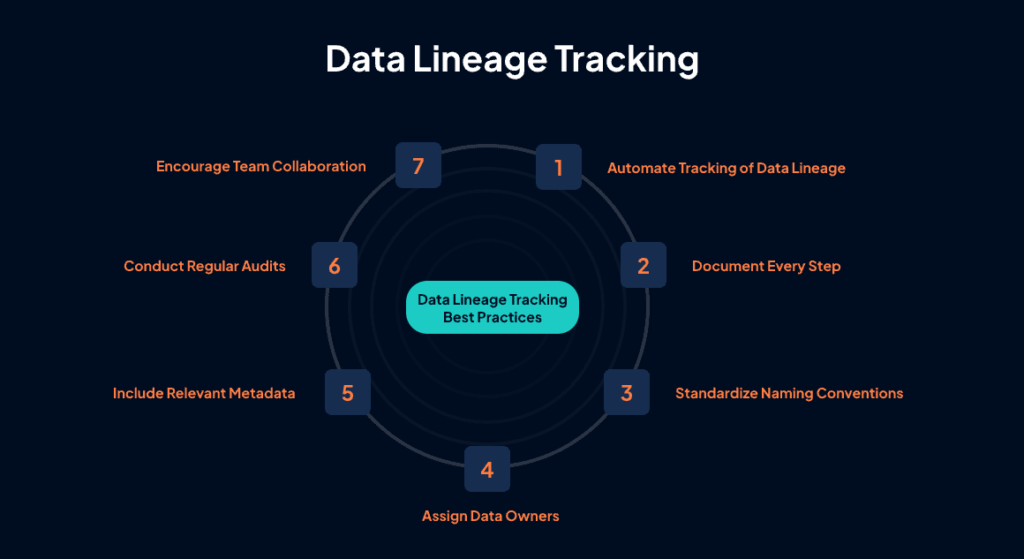
1. Automate Tracking of Data Lineage
Use automated tools to capture data flows in real-time. This minimizes manual errors and keeps lineage information current. Start automation during the initial migration phase to ensure accurate tracking from the outset. Optimize by selecting tools that integrate well with your existing systems for seamless operation and enhanced efficiency.
2. Document Every Step
Maintain detailed records of the data’s journey, including its source, transformations, and destination. Develop a uniform template for documentation to guarantee consistency throughout the organization. Consistently revise this documentation whenever changes happen to maintain its accuracy and utility. Utilize version control to monitor modifications efficiently over time.
3. Standardize Naming Conventions
Develop clear naming rules for datasets and transformations to reduce confusion. Establish these conventions early in the migration process to ensure everyone is on the same page. Optimize by creating a shared glossary of terms that everyone can access and refer to, enhancing clarity and collaboration.
4. Assign Data Owners
Assign individuals for each dataset to ensure accountability and enable faster resolution of inquiries or problems connected to lineage. Designate these roles in the planning stage of your migration project. Consistently communicate with data owners to emphasize their duties and offer extra training if necessary, making sure they are prepared to handle their datasets efficiently.
5. Include Relevant Metadata
Record key information regarding your data, including its format, origin, and transformation history. Incorporate metadata collection into your data ingestion procedures from the beginning to enhance your lineage documentation with crucial context. Utilize automated tools that effectively extract metadata without manual intervention, guaranteeing uniformity in capturing metadata.
6. Conduct Regular Audits
Schedule periodic checks of your data lineage information for accuracy and completeness. Implement audits after major changes or at regular intervals as part of your governance strategy. Create a checklist for audits to ensure thorough reviews each time, helping identify gaps or inconsistencies early on.
7. Encourage Team Collaboration
Promote conversations between departments involved in data management by scheduling regular meetings or workshops throughout and after the migration process. This alignment helps guarantee that all teams understand their roles in maintaining data lineage. Employ collaborative tools that allow teams to easily share insights, enhancing overall effectiveness in managing data streams.
Emerging Trends in Data Lineage Tracking
As technology evolves, so do the methods for tracking and managing data flows. Keeping up with emerging trends is essential to optimizing data management strategies and staying effective. Here are the top five emerging trends in data lineage:
AI and Machine Learning Integration: AI and machine learning are increasingly used to enhance tracking with data lineage by automating the identification of data flows and transformations. Incorporate AI-powered tools that can analyze patterns in data lineage and provide insights into data quality and integrity.
- How do we align it better? Regularly update your AI models with new data to improve their accuracy and effectiveness in tracking lineage.
Real-Time Data Lineage: Real-time data lineage allows organizations to monitor data flows as they happen, providing immediate visibility into data changes and transformations. Implement tools that provide real-time tracking capabilities.
- How do we align it better? Ensure your systems are capable of handling real-time data processing to support this trend effectively.
Predictive Analytics in Data Lineage: Predictive analytics forecasts potential issues in data lineage, helping organizations proactively manage their data assets. Utilize predictive analytics tools to analyze past lineage data and reveal trends and potential risks.
- In what way can it be better aligned? Integrate predictive analytics with your existing lineage tracking systems for seamless understanding of future data trends.
Industry-Specific Innovations: Various sectors create customized solutions for data lineage to tackle distinct regulatory and operational hurdles. Keep up-to-date with tools and practices relevant to your industry that can improve your organization’s data lineage initiatives.
- How can it be aligned more effectively? Engage in industry forums or groups to exchange insights and gain knowledge from colleagues encountering similar difficulties.
Enhanced Metadata Utilization: There is an increasing emphasis on leveraging metadata for more accurate and comprehensive tracking of data lineage. Ensure your lineage tracking systems capture and utilize relevant metadata effectively throughout the data lifecycle.
- How do we align it better? Regularly review metadata standards and practices within your organization to ensure they meet evolving needs.
Conclusion
Summing up, data lineage tracking is more than a technical requirement—it’s fundamental for effective modern-day data management practices. It ensures data quality, transparency, and compliance with regulations. We’ve learned that overcoming challenges like complexity and lack of standardization requires strategic approaches and best practices.
Key takeaways include:
- Automate tracking processes to minimize manual errors and enhance accuracy.
- Maintain detailed documentation of your data’s journey for clarity and troubleshooting.
- Foster team collaboration to build trust and ensure everyone is aligned.
- Leverage AI and machine learning for enhanced tracking and deeper insights.
- Ensure real-time monitoring to manage data quality proactively.
By implementing and optimizing data lineage, you can maintain accurate, trustworthy information, leading to better decision-making and organizational success. In our fast-paced tech world, quickly updating processes to meet today’s needs is essential. Staying informed about emerging trends will enhance your data governance and position your organization for success.
Ready to take the next step in simplifying your data management journey? Hevo Data offers a no-code data pipeline platform that automates data integration while providing detailed visibility into your data flows. Sign up for a 14-day free trial today and experience how Hevo can transform your approach to data migration!
